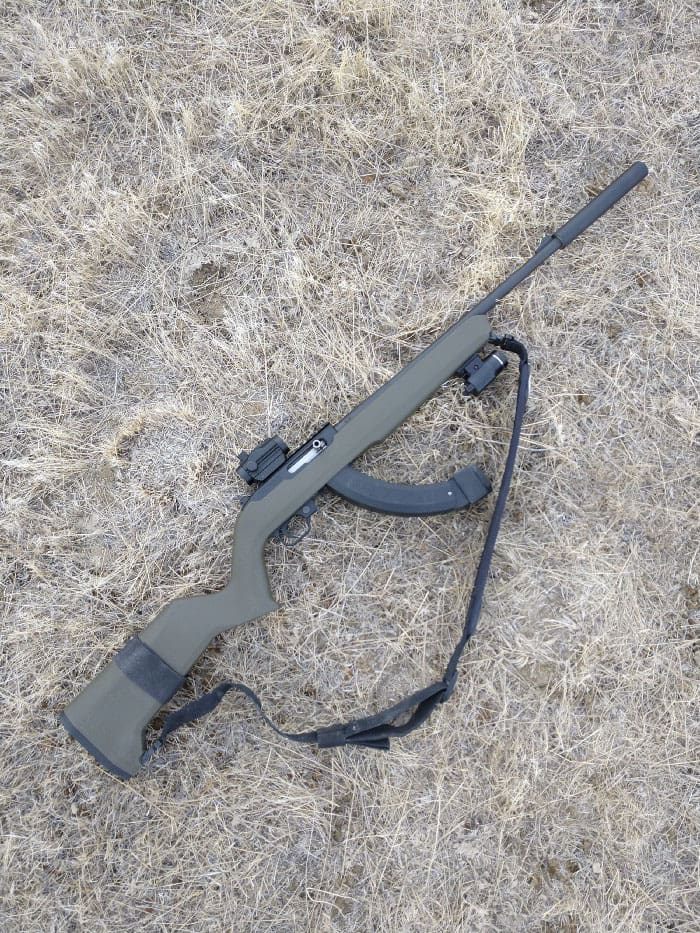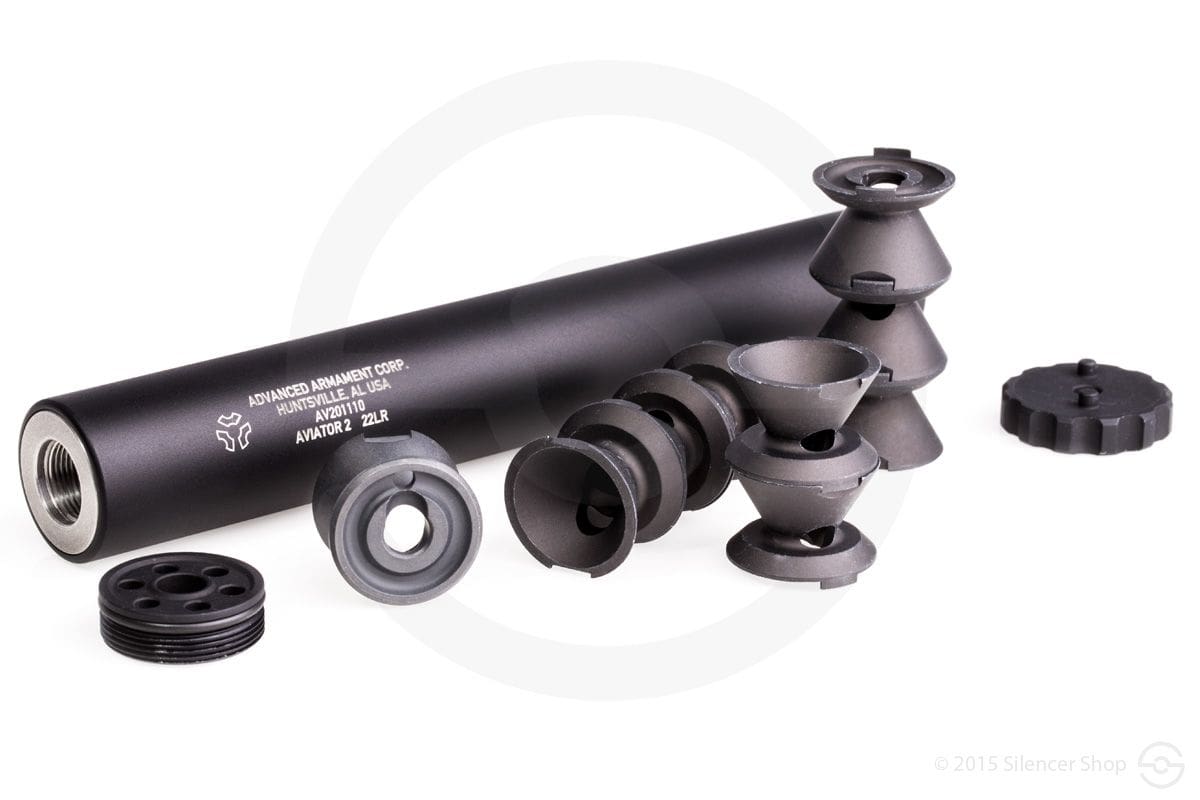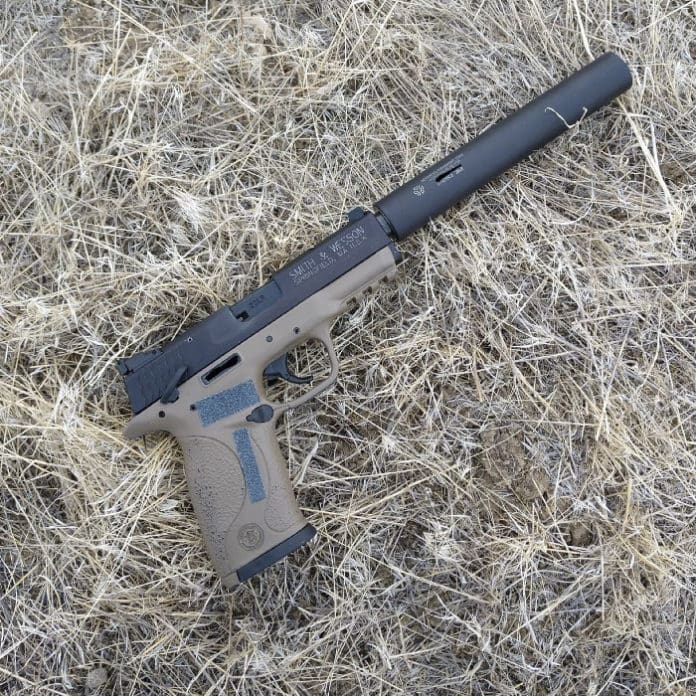By Mark Houser
I’m not a gear review guy, but I felt compelled to write this because I’m certain many of you are in the same place I was a few months ago: You want to buy a suppressor, but you haven’t pulled the trigger yet. You, quite fairly, find the legal process confusing, intimidating, invasive, or, at the very least, annoying.
Setting all that aside, you’re also unsure about which suppressor you want — and, considering the $200 you’ll be spending on the tax stamp alone, you really don’t want to choose poorly. It’s not as if you can simply drive down to the local gun store and exchange your silencer for a different one if you’re unhappy with your original purchase.
I’d hate for anyone to go through the hassle and expense of purchasing a silencer only to be disappointed at the end of a months-long Form 4 wait. Conversely, I don’t want anyone to delay a suppressor purchase because of uncertainty. You shouldn’t assume that what’s legal today will continue to be legal indefinitely — get your can, while you can!
If you want a silencer expert’s review of Advanced Armament Corporation’s Aviator 2, you should look elsewhere — that’s not me. However, if you’re wondering whether someone like you would be satisfied with an Aviator 2, read on.
The Basics

The Aviator 2 is a relatively large .22 caliber silencer, with a length of 6.4 inches. However, thanks to its predominantly aluminum construction, it’s extremely lightweight, coming in at only four ounces. This weight is, for all practical purposes, totally unnoticeable, even on a small pistol.
With a diameter of only one inch, it’s also quite slim. I was able to use the standard-height sights of my M&P 22 Compact without issue.
The suppressor comes with a nylon belt pouch, a disassembly tool, and a manual. All are perfectly adequate for their respective purposes.
Ease of Use
The suppressor screws directly onto your firearm’s barrel with standard 1/2″ x 28 threading. Please note that the Aviator 2 is for .22 LR firearms only. Don’t make the mistake of thinking that it’s compatible with, say, a .22 WMR rifle or an AR-15 simply because the threading fits — it’s not built to handle anything but .22 LR rimfire ammunition. You can see an Aviator 2 destroyed by a 5.56mm rifle here.
Such simple direct-thread attachment makes it easy to swap the suppressor between your various threaded-barrel .22s. A few times, I noticed slight loosening of the can. I only recall this happening with my M&P 22 Compact, and not with my other test firearm, a T/CR22 rifle. I suspect this was operator error (a failure on my part to screw the can down tightly enough). In any case, it wasn’t a big deal — I’d simply check to confirm that the suppressor was still screwed tightly against the barrel after every third or fourth magazine.
Functionally, the suppressor didn’t meaningfully change anything about the operation of either firearm on which I used it. All suppressors increase back pressure and fouling, and the Aviator 2 was certainly no exception in that respect.
My guns were visibly dirtier for having used the can. However, after a few hundred rounds, neither firearm had been sufficiently fouled to compromise its reliability.
Performance

The Aviator 2 offers outstanding noise reduction. While some may view the length of the Aviator 2 as excessive, that length undoubtedly is a big part of the can’s effectiveness. Holding other dimensions constant, more length equals more volume, which means more room for baffles and more space into which the propellant gases can expand. The Aviator 2 is listed with an impressive decibel reduction of 41dB.
With subsonic ammo (and most .22 ammo will be subsonic when coming out of a relatively short-barreled pistol like my M&P Compact), I perceived the ring of my steel target to be louder than the shot itself. The shot was reduced to merely a soft “pop,” far below the threshold of hearing damage. It reminded me of shooting a pellet gun. You can see and hear me fire a few shots here.
View this post on Instagram
Purchasers of silencers are often cautioned against expecting too much sound reduction. Pedants sometimes insist that these devices are “suppressors, not silencers, because they don’t truly silence guns — they merely suppress them.” There’s some truth to that — a suppressed 5.56mm AR-platform rifle, with typical NATO ammo, will still be loud enough to necessitate hearing protection.
But that point can be overstated. A .22 caliber firearm, with subsonic ammunition, equipped with an Aviator 2, is very quiet. You won’t be disappointed with the sound reduction performance, even if your expectations are very high.
A final note on performance: any point of impact shift was trivial, and shot-to-shot consistency was excellent. With the suppressor equipped on my T/CR22, I was able to shoot single-hole groups at 25 yards.
Disassembly and Cleaning

Rimfire .22 cans needs to be cleaned periodically — aside from the process of acquiring a suppressor in the first place, this must be the most unpleasant part of owning one. AAC recommends cleaning the Aviator 2 after every 500 rounds (or every 1,000 rounds, if you invest in a special sold-separately disassembly tool).
Disassembly is simple, but not necessarily easy. After unscrewing the end cap, you will likely need a dowel or similar tool to push the baffles out of the tube. Even after only 200 –300 rounds, some of nine baffles were stubbornly stuck. And while it may be more my perception than reality, the light weight of the aluminum lends a sense of fragility to the suppressor — I was anxious about applying too much force.

Once the suppressor has been broken down into its separate components, cleaning them is fairly straightforward. The manual recommends solvent and a plastic brush (I used a toothbrush). That works well, but cleaning each of the separate components is nonetheless is a tedious, time-consuming process. The Aviator 2’s many baffles contribute to its excellent performance, but each baffle requires individual attention when cleaning the suppressor.
After cleaning, the baffles need to be carefully stacked. Then, the tube is dropped over the stack. Finally, the tube is flipped over and the end cap is screwed back into the tube. Again, this process is simple, but not exactly easy. It takes care to ensure that the baffles do not become misaligned at any point.
This sort of cleaning process may be par for the course for rimfire silencers. Having said that, it’s the only aspect of the Aviator 2 that I found somewhat disappointing. Simple is good, but simple and easy would be better.
Final Thoughts
All in all, I’m thrilled with the Aviator 2. As silencers go, it’s inexpensive, yet its performance has greatly exceeded my expectations. Using it is simple, intuitive, and requires no real changes to the way that you use your firearms. (Unless you’re the guy that never cleans his guns — you’re going to have to start doing that.)
The Aviator 2 makes the experience of shooting not only more pleasant, but safer as well: the risk of hearing damage reduced, and quieter guns also make communication with other shooters easier. That’s a quality that I especially appreciate as an instructor. I look forward to getting more suppressors that I can enjoy with my centerfire guns, but the Aviator 2 definitely satisfied my need for a dedicated .22 LR silencer.
This article was originally published at marklivesthings.medium.com and is reprinted here with permission.





Whatever works for the individual and fits your budget.
I have a Sparrow and an Oculus22. Both are stainless steel and are easily cleaned with a 15 minute ultrasonic bath of Purple Power and hot water (wear nitrile gloves when handling the used solution).
I, briefly, considered an all aluminum .22 LR can for my second .22 can purchase…but, the ease of cleaning and multi-cartridge capability for only 2.5 additional ounces was most convincing.
Just my $0.02 worth.
Because the tax stamp makes up a good third or more of the price of most rimfire cans, I would say get the best combination you are able to, especially since you will likely have it for life. Saving $25-75 vs another model probably isn’t worth it in the long run, unless you want to collect stamps.
I think I was looking at the warlock and pilot/aviator but ended up with the Element 2 due to it being the only one in stock during a panic, but it is shorter than the aviator and has steel baffles but less than an ounce more weight. I prefer the shorter length. I got the Oculus later with a promotion free tax stamp or something and, since it is modular it can become even smaller, almost seems like a flash hider when on a rifle.
You can find deals on the cheaper rimfire cans like free aviator with purchase of a rifle can or $99 rimfire so those can be good ways to get them as well, though the $400 in tax stamps is a harder hit.
Ditto. If you’re waiting a year and spending $200 on a stamp, spend a little more and get a more capable silencer. $500 ($300 + $200) v. $600 ($400 + $200) is $100/20% more over a year for a more durable, more capable silencer, like ACC’s own Element 2, or something modular, like the Q Erector. Then, you can fire .22 Mag or 5.7, and it will last longer with just .22 LR. You can’t trade in the silencer or get a refund on the stamp if you don’t like what you bought. It’s still another $200 stamp and year wait for the next one.
An Aviator 2 was my first can, I wouldn’t buy one again for a few reasons. As the author here mentions, disassembly is incredibly difficult, I actually ended up bending the edge of the tube attempting to pound the baffles out with a dowel as instructed in the manual, and AAC refused to cover the damage under warranty, only offering to destroy the can for me. I got it back and sent it to Curtis Tactical, who were able to repair the can and have it back in the mail to me within one day. Also, it is very long for what it is, I bought a Rugged Oculus after the cleaning incident, and it’s both quieter and an inch and a half shorter, while only costing $125 more, while also being all steel and modular. If you do purchase one of these, be sure to track down one of the baffle pusher tools that AAC developed for the Element 2, they’re really the only way to safely get the cans apart for cleaning, and they actually work for any .22 can.
I discovered early on that my Sparrow was a beyotch to disassemble when I had fired too many rounds between cleanings. I had some 2″ dia UHMW PE round stock left over from a project. Chucking up a 2.5″ long piece in my wood lathe, I turned 2″ of the length down to 0.880″ dia and left the remaining 0.500″ full diameter at 2.000″ as a flange (base). Counterboring the turned end to 0.680″ ID x 0.25″ deep resulted in a small easy to use core tool that self-centers on the mounting threads of the Sparrow.
UHMW polyethylene is smooth, slick, very durable and easy to machine…added bonus, it won’t scratch the finish on the Sparrow. Cost was scrap material and 10 minutes of my time. It works on the Oculus* as well (it should work on almost any .22 can that is (more or less) an inch in diameter and that has a removable core or baffle stack.
Think of it as a heavy-duty plastic dowel.
* the design of the Oculus stack seals better than the clamshells of the Sparrow. I typically do not have to use this tool in disassembling the Oculus22.
Case, your experience shows me that I’ll file this suppressor under: Things That Suck.
Suppressed rimfire is joy. Excellent for introducing new folks to the fun of shootin’, great for kids, and consistently fun for the experienced range-trippers too. Pop into your local FFL+SOT, and pick out a rimfire can! You’ll only wish you’d bought one sooner.
PS: ATF wait times are down lately. We’re averaging under 175 days from signing to stamp in hand for Form 4.
I bought my first threaded barrel firearm several months ago. A .22WMR rifle. I was surprised to see that suppressor is .22LR rated only, which I confirmed. But the Element 2 model is WMR rated. A little shorter and heavier.
I see that some of the baffles stainless steel and some are aluminum which is odd. Are the stainless ones closer to the threaded end? For those having trouble removing the baffles, it might help to heat the whole unit before disassembly. Aluminum expands more than stainless. Don’t get carried away. Aluminum alloys lose strength rapidly with really hot temps.
Don’t forget to apply slather of high temp grease to your tube and baffles to make it easier on disassembly
MAN O MAN , NEED MORE MONEY TO GET ALL THIS STUFF ,
MAYBE I SHOULD START A GO FUND ME ,
THANKS ON INFOR , ALWAYS
This was my first can. I love it. So light, you don’t even notice it on a pistol. Excellent sound reduction. Cleaning is a bitch, though. I’m good with the trade off to have something so light.
What sucks is in this article all the links are to some silencer site that almost never lists the barrel pitch for what they are selling.
Uma das melhores coisas de Aviator é que cada utilizador pode sentir confiança. Por exemplo, Aviator Spribe pode oferecer a melhor jogabilidade e o melhor produto do mercado. https://aviators.com.br/ Com as nossas ferramentas de promoção e mecânica social incorporadas, cada jogo parece uma experiência.
Esta tecnologia baseada na criptografia é uma garantia de 100% de confiança e transparência para um jogador.
1x2Game Bem-vindo a um mundo de diversão com jogos de azar emocionantes! Descubra o melhor cassino on-line no 1x2Game, onde emoções inesquecíveis, prêmios e possibilidades ilimitadas esperam por você. Junte-se a nós e desfrute de caça-níqueis exclusivos, jogos de mesa emocionantes e ganhos instantâneos. Você encontrará uma atmosfera de luxo e sorte e a segurança e transparência do jogo. Comece agora sua aventura inesquecível e torne-se o novo rei do mundo dos jogos de azar!